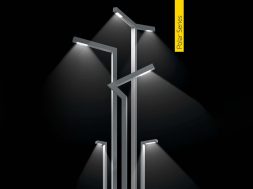Making High-Rises Future Proof

In today’s urbanized world, there is a lack of space, resulting in the need to design sustainable and future-proof high-rises.
Indian architecture, to be precise, was based on resilience and sustainability. The onset of modern architecture and our blooming cities changed this operational framework, and new-age buildings barged in with syntax of their own. The increasing urban population, lack of more great towns, and space crunch brought tall buildings into play. So much so that the arena of cosmopolitan cities has become synonymous with high rises.
With no option left since newer towns will take their own time to match up to existing ones, high-rises are here to stay, so it’s high time to look at innovations that will make them sustainable and resilient. Usually, modern architecture is touted to be resilient, and often, it is flaunted as a USP. It’s time to add this quality to sustainability and design future-proof highrises.
Vertical Development in Seismic Zones
Speaking on how to achieve the best solution in seismic zones, Ms. Ar Rupali Mande, R DESIGN Architects, says, “Population growth is causing many developments, and with limited space, all societies are going upward, making cities more dense and crowded. Here, we recommend cluster development. With cluster development, we can add more green spaces or recreational areas.
We may need to look at both high-rises and underground solutions. As high rises and underground solutions bring the mid-zone, a better solution is required.” Adding to the efficient creation of parking spaces in Mumbai, Rupali says, “When we talk about parking, we have limited land, so everyone wants to make efficient use of it for residential development. Parking has always been considered a secondary issue, but with the new systems, there will be a rush for parking turnovers. In addition, multi-level parking is also an effective option in this case.”
GIS satellite system and Waste Management in Highrise Structures
Mr. C R Rajasekar, Engineers India Limited, speaks, “Currently, ISRO and our urban ministry are planning a joint mission to determine how much contract deposit needs to be made. They are working on it already, and we may be able to find out a separate satellite in another couple of years if we can meet the 20/28 target. Therefore, to determine how much quantity and quality is there for mining, we already have a separate satellite for this portion. For communication, we have the same method for solid waste management. Our main issue is getting the correct data which could be utilised effectively. In terms of depositing, how they deposit, and how they use that thing, we are just in the grey area as far as India is concerned, and that knowledge is also lacking.
To find a better solution, we once again want to rely on satellite-based systems that may effectively use resources going up. I am also taking care of that, but in the future, we can find out a better solution. We are in the pipeline only as we cannot reach the correct position in the future. We can find out in 2030 how much of debris has been deposited into and out of the water daily that we can quite possible, and where it is there and how far it extends, but also we can find out.”
Talking about waste management in highrises, Mr.Rajasekar elucidates, “Whenever we construct a massive building in and around a community, we can access the community areas where these familiar places such as office buildings, park areas, standard toilets or the boundary walls, and the paver blocks where the parking bays are located. As far as tall buildings are concerned, we can never take a chance when developing a massive structure in and around. We can incorporate the community areas where these familiar places, office buildings, and park areas are placed. It doesn’t matter where this pedestal pot is located; we can empty it effectively and use what waste is generated during the construction of that high-rise building. There will be around two to three per cent of the quantity generated, and we can put a small budget plan within the building. So we will be able to restructure into the natural aggregate we use.
An embodiment of Technologies in Making Cities Smarter
Elucidating on the modern technologies, Dr Hemant Dhonde from C-Probe Technologies LLP, Pune spaces, says, “Modern technologies have always played a significant role in the development of construction activities and future cities. A city’s living space is its most important component. As far as future-proof spaces are concerned,
adoption, quick adoption, effective adoption of such latest technologies, and conglomerates are combining these technologies to create a synergetic development that will help create a Smarter City in the future. Our cities have to move ahead of smarter cities; we have to go to visor cities because we have to strike a balance between the environment, humans, space, and available resources. Therefore, it’s not just about smart cities, but how we approach getting wiser cities.”
Adding to how construction waste could be recycled, Mr. Rajasekhar says, “ The amount of construction waste that is recycled is once only 1%. We will see a rise in demand when we start recycling more, while the cost will also decrease. A growing number of startup companies are there and ready to take advantage of the opportunity. Moreover, government support is also provided for them. The people who have construction jobs must also support them.
Growth of Technology in Future Cities
Mr. Hemant, concludes, “The past civilisation can be studied, and it can be concluded that technologies are the drivers. The building space in the future, starting with homes and continuing to infrastructure, will be affected by these technologies in a very, very significant way. Right now, we are talking
about construction waste, for instance. This future technology in construction involves a self-healing bioremediation pre-treatment to be applied to such C&D waste to make it usable in structural applications. As a result, these kinds of innovative approaches are being used. Mass-scale production will take a little longer, maybe a year or two.
In this case, however, there is an example proving that stipulates are a viable option. These technologies can be relied upon. In Pune, we manufacture a technology that is also fit for the future. In addition, it can be advanced to meet the needs of futuristic buildings. During the next 50 years, we will not be able to build only on Earth; we will have to build on extraterrestrial planets as well. The solution would have to be entirely out of the box.”
Cookie Consent
We use cookies to personalize your experience. By continuing to visit this website you agree to our Terms & Conditions, Privacy Policy and Cookie Policy.









